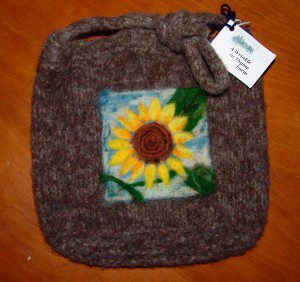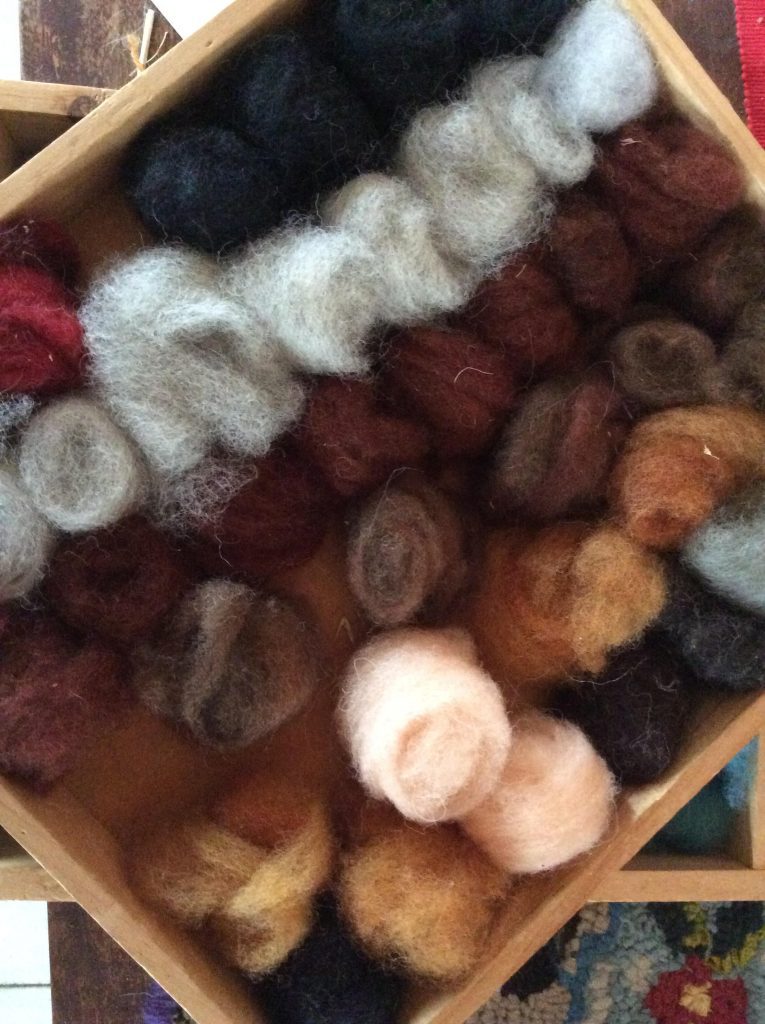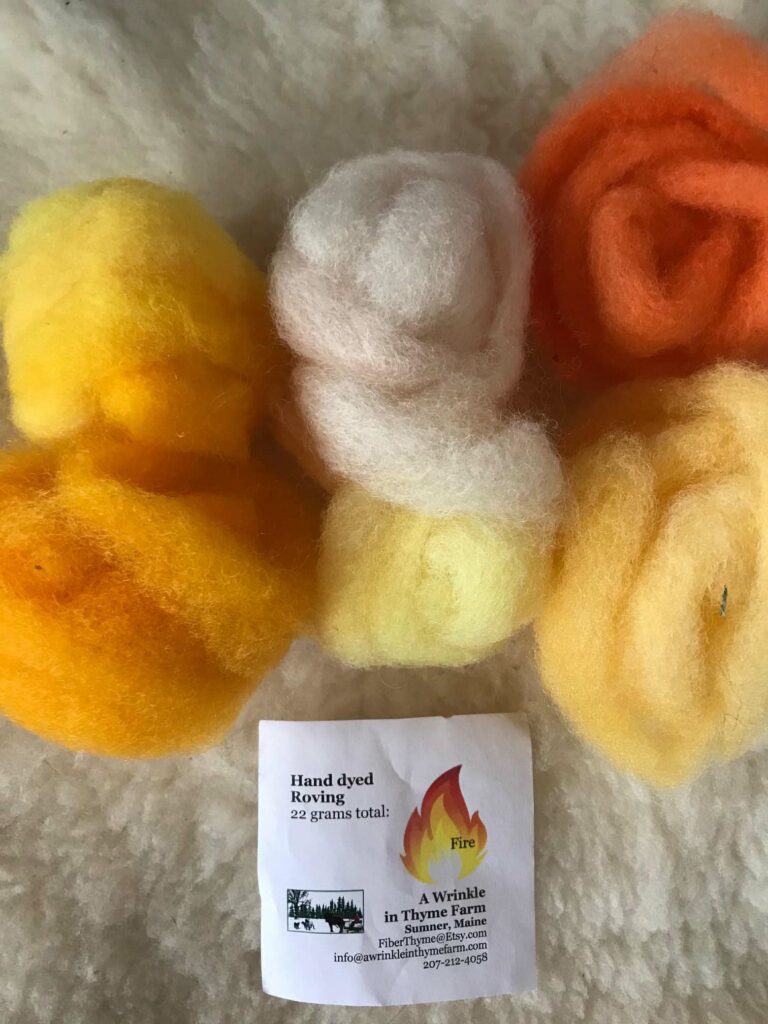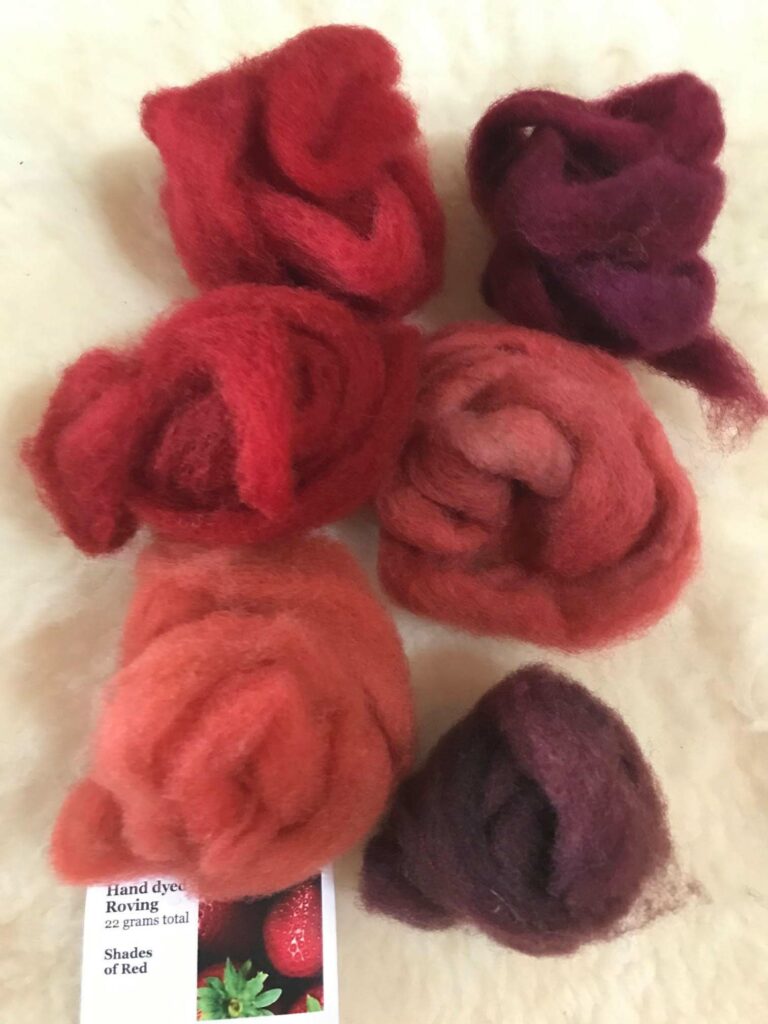Felting is one of the easiest and most forgiving uses of wool that is available. Simple but fun, it doesn’t require a lot of equipment or too much focused concentration. Needle felting was invented for industrial use, first done in the 1860s. Needle punched non-wovens were first used in the mattress and furniture industry and later as car carpets. Artistic needle felting was first done in the 1990’s.
Felting is great for all ages, elders to kids. Felt making is one of the oldest fiber techniques dating back as far as 6300 BC. Felt has been used as shelters (yurts), rugs, hats, and footwear.
Needle felting is done with special barbed felting needles. The barbs on the needles catch fibers and because the wool has microscopic fishhooks on it, it becomes permanently attached to itself. It was in the early 1990s that it began to be used as an art form. Many artists create 3D sculptures by hand.
Thyme Tile Felting Kits Now Available From Mormor
We have sold our Thyme Tile business to Morgan Macfarlane, and we are thrilled to help another Maine fiber artist carry on with the kits. To purchase thyme tile kits, please visit mormor.love.
Felted Pet Portraits
Marty can do a portrait of your pet or favorite animal using a photograph. Contact Marty by email for more information. fiberthyme@gmail.com
We offer a palette of individual roving balls in a range of colors available 3 for $1.00. There are also roving colorways that offer a collection of colors in various shades. We offer 100% wool felt in various sizes for creating your own designs.
We also carry 38 gauge triangle and spiral felting needles in sets of two. A pen that holds 3 needles is also available.
Wet Felting
Pocket bags are knitted with wool yarn and then “fulled” in the washing machine with hot water (some people call this boiled wool). This causes the bag to shrink and become thicker and more durable. A design is made using needle felting and sewn onto the bag making unique and stylish hand bags.

Felting is one of the easiest and most forgiving uses of wool that you can do. Simple but fun, it doesn’t require a lot of equipment or too much focused concentration. It’s great for all ages, elders to kids.
Making something with wet felting is one of the oldest fiber techniques dating back as far as 6300 BC. Felt has been used as shelters (yurts), rugs, hats, and footwear.
My favorite work with wet felting is making a background for needle felting. You can also make wet felted vessels, felted soaps, scarves, and more.
Friction-creating surfaces such as bubble wrap, bamboo blinds, and washing machines speed up the process. You can also wet felt a knitted object by washing it in hot water with lots of agitation. Given enough time the wool shrinks and binds together.
Wool felt protects against heat and insulates against cold.
It absorbs and holds moisture and can be cut without fraying or unraveling.


